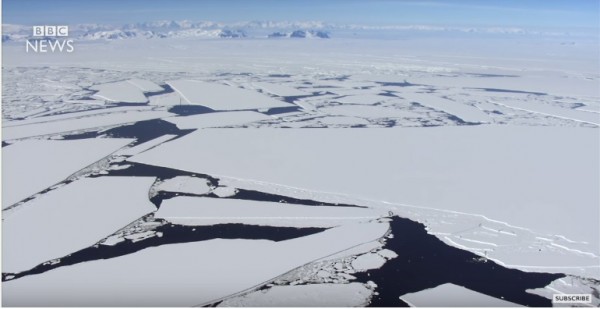By Charissa Echavez, | January 20, 2017

If the fissure continues to crack about 12 miles (20 km) more, the rift in the Larsen C Ice Shelf will free a tabular berg about one-quarter of the size of Wales.
A 100-mile ice crack on the Atlantic grew longer by another 6 miles (about 10km) in less than two weeks this month, according to a report by British researchers on Thursday.
If the fissure continues to crack about 12 miles (20 km) more, the rift in the Larsen C Ice Shelf will free a tabular berg about one-quarter of the size of Wales, making one of the biggest icebergs ever recorded in history, BBC noted citing researchers a Swansea and Aberystwyth universities, and the British Antarctic Survey.
Like Us on Facebook
The lengthening crack in the 350-meter thick floating ice shelf on the eastern side of the Antarctic Peninsula was obtained from the EU's Sentinel-1 satellite system.
The data revealed that the crack now widens to about 121 miles (195 km). However, experts could not estimate how long before the 5,000 sq km block totally will break free.
"The rift tip has just entered a new area of softer ice, which will slow its progress," Prof. Adrian Luckman from Swansea said.
"Although you might expect any extension to hasten the point of calving, it actually remains impossible to predict when it will break because the fracture process is so complex," he continued.
Luckman hunched that something will happen within weeks or months based on the recent developments, although outside factors may still play a role to slow the growth. He also said that rift growth are sometimes affected by some ocean swell coming from other places that are hard to determine.
Experts are interested to determine how the breakage will affect the remaining shelf structure if the iceberg splits away, something that is important to find out as floating ice shelves usually act as a buttress to glaciers flowing off the land behind them.
In the case of Larsen B, glaciers will subsequently spread up without the shelf. Of note, it is the land ice, and not the floating ice in a shelf, that causes an increase in sea level. And if Larsen C will experience the same phenomenon, it would continue a trend across the Antarctic Peninsula.
Most of the big tabular bergs produced in the Antarctic are usually swept in currents that bring them to the north towards the British overseas territory of South Georgia. When these are caught on shallow waters, they gradually wither.
-
Use of Coronavirus Pandemic Drones Raises Privacy Concerns: Drones Spread Fear, Local Officials Say

-
Coronavirus Hampers The Delivery Of Lockheed Martin F-35 Stealth Fighters For 2020

-
Instagram Speeds Up Plans to Add Account Memorialization Feature Due to COVID-19 Deaths

-
NASA: Perseverance Plans to Bring 'Mars Rock' to Earth in 2031

-
600 Dead And 3,000 In The Hospital as Iranians Believed Drinking High-Concentrations of Alcohol Can Cure The Coronavirus

-
600 Dead And 3,000 In The Hospital as Iranians Believed Drinking High-Concentrations of Alcohol Can Cure The Coronavirus

-
COVID-19: Doctors, Nurses Use Virtual Reality to Learn New Skills in Treating Coronavirus Patients













